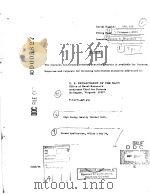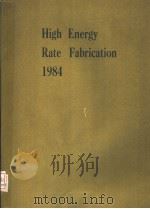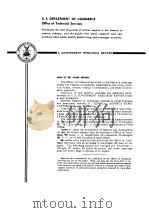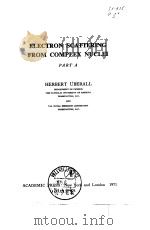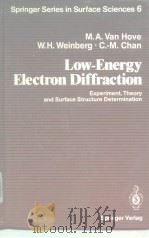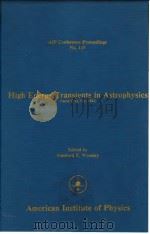《High-Energy Electron Scattering Tables》
| 作者 | Robert Herman and Robert Hofst 编者 |
|---|---|
| 出版 | 未查询到或未知 |
| 参考页数 | |
| 出版时间 | 没有确切时间的资料 目录预览 |
| ISBN号 | 无 — 求助条款 |
| PDF编号 | 820353448(仅供预览,未存储实际文件) |
| 求助格式 | 扫描PDF(若分多册发行,每次仅能受理1册) |
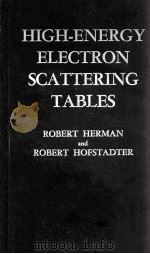
PART Ⅰ:HIGH-ENERGY ELECTRON SCATTERING1
ⅠIntroduction3
Ⅱ Electron Scattering in the Born Approximation5
Ⅲ Accuracy of the First Born Approximation8
Ⅳ Choice of Nuclear Models13
ⅤDiscussion and Preparation of the Tables14
Auxiliary Trigonometric Functions16
Table of Functions;Nuclear Charge Densities and Form Factors16
Nuclear Charge Density Distributions23
Nuclear Form Factors23
Proton and Neutron Cross Sections and Form Factors23
Point Nucleons23
Nucleons of Finite Size26
Aids in Computing Proton and Neutron Form Factors30
The Deuteron32
Elastic Electron Scattering from a Deuteron Composed of Point Nucleons33
Elastic Electron Scattering from a Deuteron Composed of Extended Nucleons38
Inelastic Electron Scattering from a Deuteron Composed of Point Nucleons40
Inelastic Electron Scattering from a Deuteron Composed of Extended Nucleons(The Neutron)43
Nuclei Heavier than the Deuteron49
The Alpha Particle49
Nuclei of the First p-Shell50
Medium Heavy and Heavy Nuclei51
Energy of Scattered Electron54
Electron-Electron Scattering54
ⅥKinematic Relations56
Incident Electrons56
Moving Target Nucleus56
An Angular Relation57
Relation of Laboratory Angles to CM Angles57
Angular Distributions in Laboratory and CM Systems58
Energies in Laboratory and CM Systems58
Projectiles Heavier than Electrons59
Momenta of the Particles after Collision59
Angular Relationship between Laboratory and CM Systems60
Angular Distributions in Laboratory and CM Systems60
Energy in CM System60
Target-Nucleus Distribution60
ⅦSummary of Nuclear Size Parameters61
Ⅷ Application to Scattering of Muons64
Ⅸ Graphical Aids to Computation66
References77
PART Ⅱ:NUMERICAL TABLES81
ⅠAuxiliary Trigonometric Functions83
Ⅱ Nuclear Charge Density—Gaussian Model84
Ⅲ Nuclear Charge Density—Exponential Model86
Ⅳ Nuclear Charge Density—Hollow Exponential Ⅰ Model88
Ⅴ Nuclear Charge Density—Hollow Exponential Ⅱ Model90
Ⅵ Nuclear Charge Density—Yukawa Ⅰ Model92
Ⅶ Nuclear Charge Density—Yukawa Ⅱ Model94
Ⅷ Nuclear Charge Density—Hollow Gaussian Model96
Ⅸ Nuclear Charge Density—Harmonic Well Model(α=1/3,2/3,1,4/3,5/3,2)98
Ⅹ Nuclear Charge Density—Modified Exponential Ⅰ Model110
Ⅺ Nuclear Charge Density—Clementel-Villi Model(f=0.2)112
Ⅻ Nuclear Charge Density—Modified Harmonic Well Model(α1=0.725×10 -13cm;α2=0.300×10 -13cm)114
ⅩⅢ Nuclear Form Factor—Uniform Model116
ⅩⅣ Nuclear Form Factor—Gaussian Model119
ⅩⅤ Nuclear Form Factor—Exponential Model122
ⅩⅥ Nuclear Form Factor—Shell Model125
ⅩⅦ Nuclear Form Factor—Hollow Exponential Ⅰ Model128
ⅩⅧ Nuclear Form Factor—Hollow Exponential Ⅱ Model131
ⅩⅨ Nuclear Form Factor—Yukawa Ⅰ Model134
ⅩⅩ Nuclear Form Factor—Yukawa Ⅱ Model137
ⅩⅪ Nuclear Form Factor—Hollow Gaussian Model140
ⅩⅫ Nuclear Form Factor—Harmonic Well Model(α=1/3,2/3,1,4/3,5/3,2)143
ⅩⅩⅢ Nuclear Form Factor—Modified Exponential Ⅰ Model161
ⅩⅩⅣ Nuclear Form Factor—Clementel-Villi Model(f=0.1,0.2,0.3,0.5,1.0)164
ⅩⅩⅤ Nuclear Form Factor—Modified Harmonic Well Model(α1=0.725×10 -13 cm;α2=0.300×10 -13 cm)179
ⅩⅩⅥ Rosenbluth Scattering Cross Sections for Proton and Neutron182
ⅩⅩⅦ Nuclear Form Factors for the Deuteron Composed of Point Nucleons224
ⅩⅩⅧ Deuteron Properties of Wave Functions Used in the Electron-Scattering Calculations225
ⅩⅩⅨ Deuteron Wave Functions225
ⅩⅩⅩ Inelastic Electric Scattering from a Deuteron Composed of Point Nucleons226
ⅩⅩⅪ Inelastic Electron Scattering from a Deuteron Composed of Extended Nucleons(α1P=α2P=α2N=0.8×10 -13 cm)237
ⅩⅩⅫ Inelastic Electron Scattering from a Deuteron Composed of Extended Nucleons(α1P=α2P=0.8×10 -13 cm and α2N=0.6 and 1.0×10 -13 cm)249
ⅩⅩⅩⅢ Energy of Scattered Electron259
ⅩⅩⅩⅣ Electron-Electron Scattering Cross Sections262
《High-Energy Electron Scattering Tables》由于是年代较久的资料都绝版了,几乎不可能购买到实物。如果大家为了学习确实需要,可向博主求助其电子版PDF文件。对合法合规的求助,我会当即受理并将下载地址发送给你。
高度相关资料
-

- THE HIGH-ENERGY LIMIT
- PLENUM PRESS
-

- MODELS OF HIGH ENERGY PROCESSES
- 1980 CAMBRIDGE UNIVERSITY PRESS
-
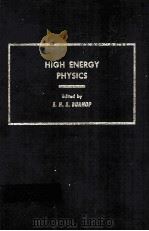
- HIGH ENERGY PHYSICS VOLUME 1
- 1967 ACADEMIC PRESS
-
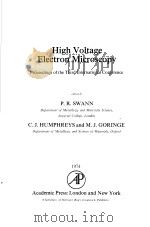
- HIGH VOLTAGE ELECTRON MICROSCOPY
- 1974 ACADEMIC PRESS
-

- Electron Scattering Theory for Ordered and Disordered Matter
- 1990 The Universities Press Ltd
-
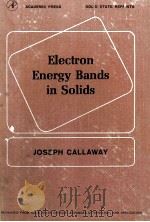
- Electron Energy Bands in Solids
- 1958 Academic Press Inc.
提示:百度云已更名为百度网盘(百度盘),天翼云盘、微盘下载地址……暂未提供。➥ PDF文字可复制化或转WORD
